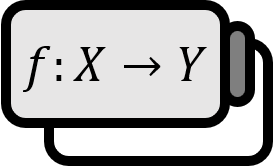Origin of the arc notation for inverse trigonometric functions
Definition
The inverse function of a trigonometric function is called the inverse trigonometric function.
Explanation
Inverse trigonometric functions are often denoted using standard inverse notation $\sin^{-1}$, $\cos^{-1}$, but they are also frequently denoted with the prefix arc-, as in $\arcsin$, $\arccos$.
$$ \begin{align*} \arcsin x &= \sin^{-1} x \qquad & \operatorname{arccsc} x &= \csc^{-1} x \\ \arccos x &= \cos^{-1} x \qquad & \operatorname{arcsec} x &= \sec^{-1} x \\ \arctan x &= \tan^{-1} x \qquad & \operatorname{arccot} x &= \cot^{-1} x \end{align*} $$
Here, arc refers to an arc or arc length, meaning the length of the arc.
$$ \sin\theta = x \iff \arcsin x = \theta $$
The names of trigonometric functions often derive from their geometric properties on the unit circle. This is similarly the case here; if you consider a unit circle with a radius of $1$, because $\theta = r\ell$ results in $\theta = \ell$, the angle and arc length are the same. Therefore, $\arcsin x$ becomes the length of the arc created by a right triangle in the unit circle with a height of $x$, thus the name arc is applied.
